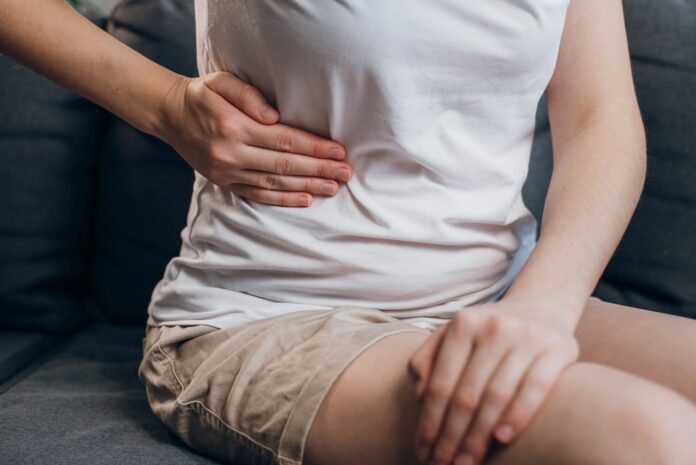Gallstones are a common medical condition that can cause a range of symptoms and complications. These small, pebble-like structures form in the gallbladder, a small organ that plays a crucial role in digestion. Gallstones can vary in size and number and may not always cause noticeable symptoms. However, when they do, the symptoms can be quite uncomfortable and even serious. In this, we will explore the symptoms of gallstones, their causes, risk factors, and potential complications.
Symptoms of Gallstones:
The symptoms of gallstones can be diverse and often depend on whether the gallstones cause an obstruction, inflammation, or other complications in the gallbladder or bile ducts. Not everyone with gallstones experiences symptoms, but when they do occur, they typically fall into the following categories:
1. Biliary Colic: Biliary colic is characterized by intense, steady pain in the upper abdomen or right upper quadrant, below the ribcage. The pain may last for several hours and is often triggered by fatty meals. It can radiate to the back or right shoulder blade and may be accompanied by nausea and vomiting.
2. Cholecystitis: Cholecystitis is inflammation of the gallbladder and is often a result of gallstones blocking the cystic duct, preventing the release of bile. Symptoms include severe, constant pain in the upper abdomen, usually accompanied by fever and chills. Cholecystitis can be a medical emergency and requires prompt treatment.
3. Gallstone Pancreatitis: Gallstone pancreatitis occurs when gallstones pass from the gallbladder into the common bile duct and block the pancreatic duct, leading to inflammation of the pancreas. Symptoms include severe upper abdominal pain that can radiate to the back, along with nausea, vomiting, and fever.
4. Biliary Obstruction: Gallstones can block the common bile duct, preventing bile from reaching the small intestine. This can lead to jaundice, which causes yellowing of the skin and whites of the eyes. Dark urine and pale stools may also occur.
5. Dyspepsia: Some people with gallstones may experience chronic indigestion, bloating, and discomfort in the upper abdomen, often referred to as dyspepsia. These symptoms may be triggered or worsened by fatty meals.
6. Complications: Gallstones can cause severe complications, such as cholangitis (infection of the bile ducts), pancreatitis (inflammation of the pancreas), or abscess formation in the gallbladder. These conditions can lead to high fever, sepsis, and life-threatening situations.
Causes and Risk Factors:
Gallstones are primarily composed of cholesterol or bilirubin, a pigment produced when red blood cells break down. The exact cause of gallstone formation is not fully understood, but several factors are known to contribute to their development:
1. Cholesterol Levels: High levels of cholesterol in the bile can lead to the formation of cholesterol gallstones. An imbalance in the components of bile can result in cholesterol supersaturation.
2. Bile Concentration: If the bile becomes too concentrated due to insufficient water content, it can contribute to gallstone formation.
Diagnosis:
If an individual experiences symptoms suggestive of gallstones, a healthcare provider will typically conduct a thorough medical history and physical examination. To confirm the presence of gallstones and evaluate their impact, various diagnostic tests may be performed:
1. Ultrasound: An abdominal ultrasound is the most common and effective way to visualize the gallbladder and identify the presence of gallstones.
2. CT Scan: A computed tomography (CT) scan can be used to visualize the gallbladder and surrounding structures in cases where ultrasound results are inconclusive.
Treatment Options:
The treatment of gallstones varies depending on the presence and severity of symptoms, the risk of complications, and the individual’s overall health. Common treatment options include:
1. Observation: If gallstones are discovered incidentally and are not causing symptoms or complications, they may be observed without intervention.
2. Dietary Modifications: Changes in diet, particularly a reduction in the consumption of high-fat foods, can help manage symptoms and reduce the frequency of gallbladder contractions.
3. Medications: In some cases, medications may be prescribed to dissolve gallstones, although this treatment option is typically reserved for small cholesterol gallstones.
4. Gallbladder Removal (Cholecystectomy): Surgical removal of the gallbladder is the most common and effective treatment for gallstones. It can be done through minimally invasive laparoscopic surgery or open surgery, depending on the individual’s specific situation.
Conclusion:
In conclusion, gallstones are a common condition with a wide range of symptoms and potential complications. Understanding the causes, risk factors, and symptoms of gallstones is essential for early diagnosis and appropriate management. If you experience symptoms suggestive of gallstones, it’s important to seek medical evaluation and follow the recommended treatment plan to prevent complications and improve your overall quality of life.


